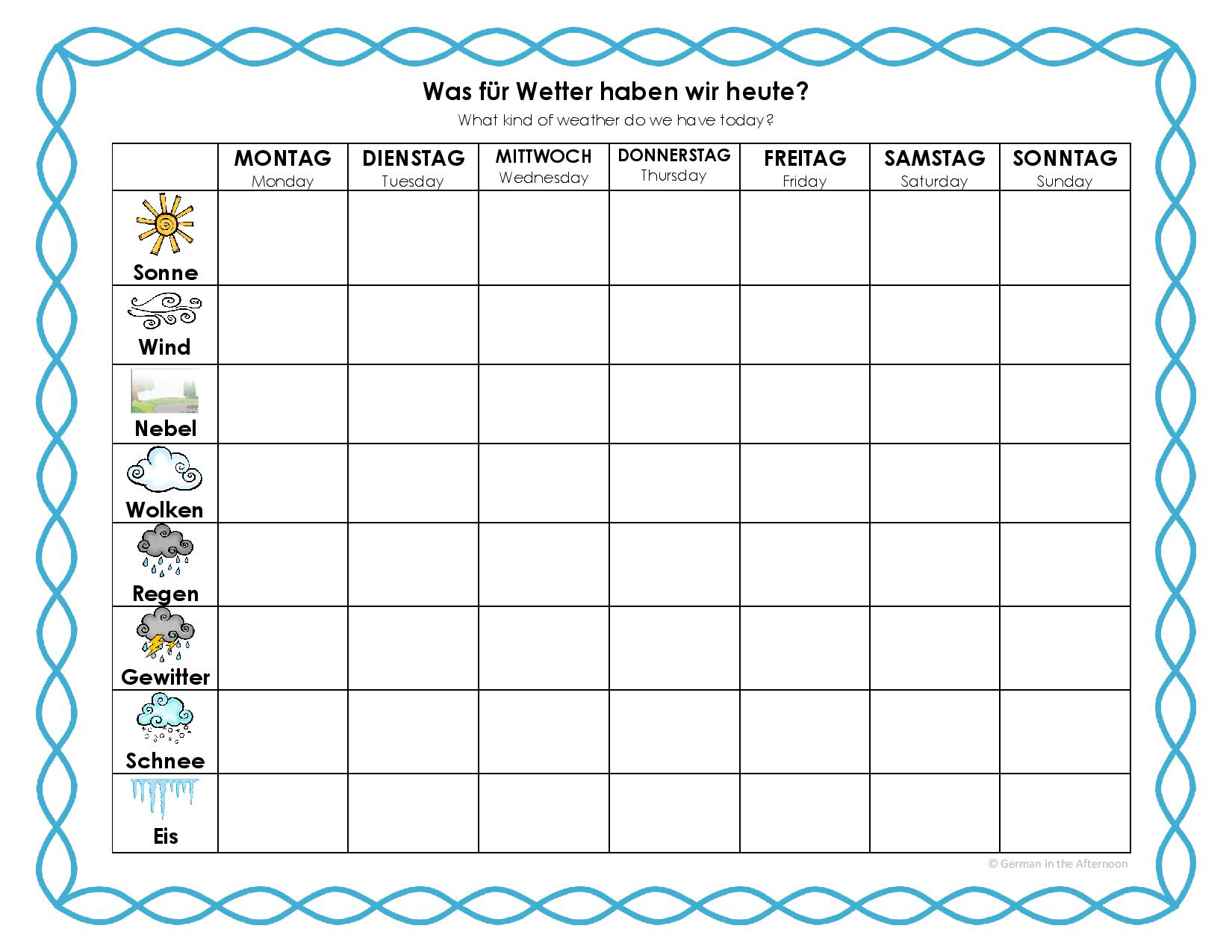Today was my first day teaching a full schedule! Well, I’ll be teaching 6 classes, once a week, to grades pre-K through 4th. It’s a big change from just the one pre-K/kindergarten class, though!
In grades 1 – 4, I will be using the Story Listening method. I absolutely loved the looks on my students’ faces when I told them I was going to tell them a story … ALL in German … and that they would understand it! The skepticism was palpable!
I chose a short, familiar story to start off with: Eric Carle’s The Very Hungry Caterpillar. I simplified the beginning and the end. I also changed up some of the food, choosing foods I thought most kids would eat 🙂 So on Saturday, my caterpillar eats a hamburger, French fries, pizza, pasta, a waffle, ice cream, and chocolate! That really got their attention!
But really, it didn’t take long for the students to recognize the story! I did not tell them ahead of time what the story would be. Once they guessed, I put the title (in German) on the board.

I only have the children for 30 minutes, once a week. So I will leave some work in the classrooms for them to do during the week. For this lesson, there are two tasks.
First is a vocabulary sheet that has images and words in German. The students have to write the English word underneath. For the younger students, I created a version that has tracing words in English, since they are still learning to spell!
The second task is to create their own reader of the story. I made a booklet with the text – main words from the vocab sheets are in bold. They have to illustrate the book. I also made a finished sample to leave with the non-German-speaking teachers 🙂
Clipart credits:

We did have some time after the story, so we sang “Ich habe Hunger”.

You can download the poster from this post.
Then we played a simple game. I asked them if they liked one of the foods from the story (pointing to the board). If the answer was “yes” they went to the right of the room. If the answer was “no” they went to the left side. It was good for some movement, and they enjoyed it!
Download the vocabulary worksheet for FREE: Die kleine Raupe Wortschatz GitA
Due to copyright issues I have not provided the booklet for download.















































